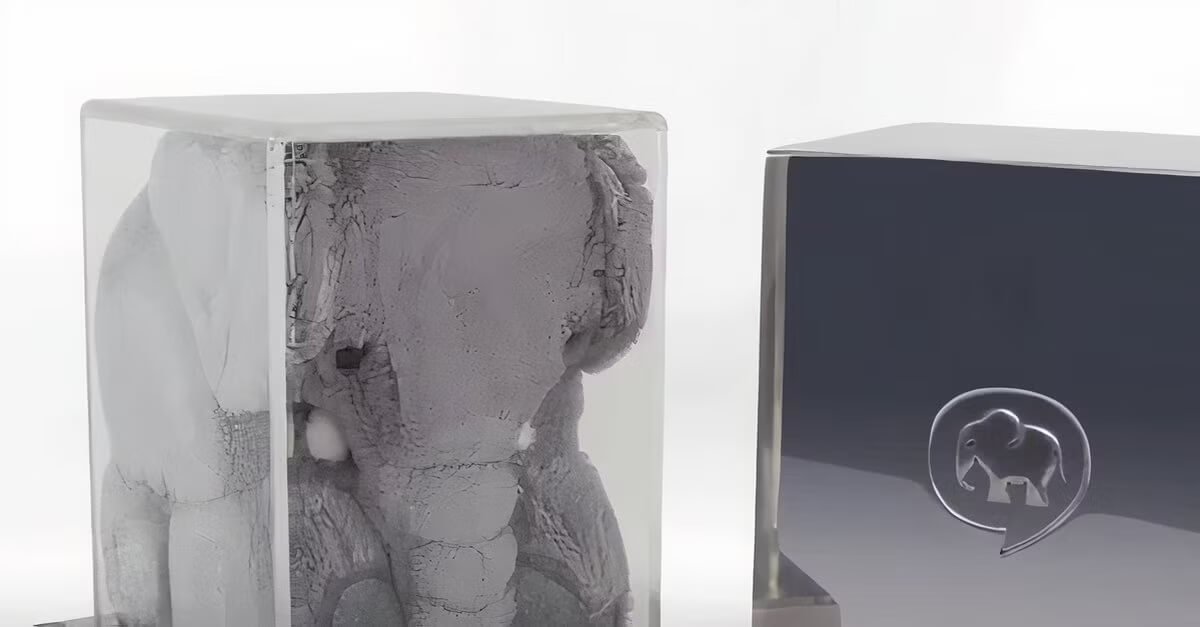We’ve all seen it. Founder walks into the Shark Tank, dreams in hand, valuation sky-high, and everyone’s holding their breath for that one life-changing handshake. But here’s the question nobody asks out loud: Does walking away without a deal always mean you’re finished? Or—sometimes—is it the smartest move you can make?
Virtuix Omni’s walk-off in Season 5 wasn’t a flop. It was the start of a serious climb. I’ll show you why, and what hustlers like you can pull from their playbook.
Contents
ToggleThe Real Story Behind Virtuix Omni: Why Are We Still Talking?
Virtuix Omni isn’t just another flash-in-the-pan, VR-gadget story. This is a company still cashing checks and making real moves long after the Shark Tank lights went out.
The Omni platform stood out from day one: not just VR, but real movement—run, crouch, sprint, act. That’s why even a decade after their Shark Tank pitch, people still ask, Hey, what ever happened to that VR treadmill? Because only a handful of tech companies survive past their hype cycle, especially without a TV deal.
Who Is Jan Goetgeluk? Founder with Grit (and Brains)
Every legit startup has that one relentless founder who’d pitch the devil for a term sheet. For Virtuix Omni, it’s Jan Goetgeluk. Wall Street tough meets engineering mind—that’s a rare combo.
Jan started as a mechanical engineer, bounced to investment banking, then pivoted to inventing the Omni after seeing how most VR gear chained you to a couch. He wasn’t all talk. Before he ever saw a Shark, his Kickstarter pulled over $1.1 million (on a $150K goal). If you’ve ever tried raising six figures just to build a prototype, you know—this guy digs for yes when most people quit.

So, What Exactly Is the Virtuix Omni?
Let’s keep it simple: Imagine a treadmill that lets you walk, run, or strafe in every VR direction—without hitting a wall. Hardcore gamers aren’t content just flicking their wrists or pretending to run—Omni made gaming physical.
The setup includes a concave platform and low-friction shoes, locked by a harness. You gear up, put on a VR headset (originally Oculus Rift, now others too), and your legs control where you move in-game. The Omni isn’t cheap, but it nails what gamers want: pure immersion, actual motion, and a workout that beats another bag of chips.
Net Worth: How Much Is Virtuix Omni Worth Today?
Let’s talk numbers—because it matters. On Shark Tank, Jan rolled out with a $20 million valuation, asking $2 million for 10%. Every Shark hated the sticker price. Many founders get blinded by those big numbers and fold under pressure—but Jan held his ground because he’d already proved the demand: $1.1 million Kickstarter, over 3,000 hardcore backers, and units selling at $499 a pop.
Post-show, Virtuix Omni kept leveling up. Recent estimates peg the company’s worth above $25 million, with more than $35 million raised in funding rounds over several years. That’s not Scrub Daddy after Shark Tank money, but in VR hardware? That’s strong. Very few gadgets survive past a year, much less sell globally.
What drove those numbers? Smart branding, yes, but more than that—a pivot from home-use to commercial setups. VR arcades, esports lounges, and training centers started picking up the Omni, driving volume way higher than a couple geeks in their basements ever could.
The Shark Tank Pitch: How Did It Go Down?
Season 5, Episode 11. Every founder dreams of that moment, but Jan came in sharp, asking big. The Omni demo turned heads—the Sharks loved the flash, but when it came to scratching a check, they weren’t reaching for their wallets. Robert Herjavec even ran on the treadmill, showing the device off to the whole SharkWorth audience at home.
But in this game, sizzle isn’t steak. Jan’s ask was too pie in the sky for the Sharks. Barbara didn’t want a giant treadmill taking over her living room—or her retail floor. Daymond didn’t believe gamers wanted to sweat. Robert saw the tech but not the market. Kevin O’Leary hated the numbers: I hate paying for two years from now today. Mark Cuban thought the VR target was niche and already crowded.
Nobody bit. No handshake, no deal. In Shark Tank terms, that’s an onscreen loss. In real business? Maybe not.
Why Did the Sharks Pass? No Fluff, Just Truth
This is where you have to listen like an operator, not a fan.
Barbara worried about physical space and retail dead zones—fair. Daymond was betting on lazy gamers who don’t want cardio with their Call of Duty. Robert agreed; he wanted frictionless fun, not frictionless sneakers.
Kevin just hated the risk. I’m not paying for two years from now, he said—classic O’Leary. He sniffed out the long sales cycle and hardware headaches. Mark Cuban? He’s seen tech fads burn cash and belly flop. Niche, he said—and in 2013, he had a point.
But here’s the thing: the market did move toward more active VR. Retail spaces started caring less—gyms, arcades, and event spaces picked up the slack. The Sharks weren’t dumb, but they weren’t betting on the big cultural shifts that finally showed up.
What Happened After Shark Tank? The Real Hustle Begins
Some founders crawl back to the drawing board after a no-deal. Jan doubled down. Shark Tank gave Virtuix Omni a monster boost of exposure—hundreds of thousands of eyeballs saw what it could do. Website traffic? Through the roof overnight. SharkWorth and other review sites kept the Omni name circulating for years.
Virtuix went harder on raising capital: angel investors, VC firms, and later, equity crowdfunding. They built new iterations of the treadmill (like the Omni Pro and Omni One), improved compatibility, and targeted out-of-home entertainment. Esports events, VR lounges, and even military training clients started calling.
Funding since Shark Tank? Over $35M raised. Hardware units shipped—now in the thousands, worldwide. Product reviews? Solid, especially in commercial venues.
That’s not a fail; that’s the pivot you have to make if the consumer launch doesn’t pan out fast enough.
Has Virtuix Omni Cracked the VR Market or Just Playing Along?
You won’t find the Omni in every suburban basement. That dream was a bit too soon (and a bit too costly). But in the places where people pay for a real VR experience—think arcades, events, training centers—the Omni absolutely shows up.
Virtuix got smart. Instead of burning cash chasing every household, they doubled down where the demand already existed. In 2021, they announced the Omni One—a sleeker, at-home version, aiming to finally break into the home market as VR hardware prices dropped.
Even bigger? Strategic partnerships. They worked with game developers, VR headset makers, and fitness brands to keep Omni top of mind. Not a household name, but a go-to for anyone building a killer VR space.
Bottom line: Virtuix is not another VR footnote. They may never be the next Peloton for gamers, but they’re one of the few VR hardware startups still selling, upgrading, and actually making money beyond their Kickstarter headlines.

Conclusion: Lessons from Virtuix Omni’s Journey
Here’s what’s up: A Shark Tank deal can be rocket fuel—or dead weight. Not getting one? That’s not game over. If your valuation is real, your market isn’t hype, and you know how to pivot when needed, you can do just fine on your own.
Jan Goetgeluk played it right. He didn’t fold under the Sharks’ pressure. He kept pressing on—even when smart people said no. That’s where the real business gets built. He leveraged Kickstarter, chased new markets when old ones didn’t pounce, and made investors—outside TV—believe.
Want to win? Treat exposure as just the start. Listen to what real customers want, keep building, and never hang your whole hustle on a five-minute pitch.
This wasn’t just one lucky moment on TV—Virtuix Omni is still selling rides on its VR treadmill years later. If you’re pitching, building, or betting your future on one big break, think again. Grind and adaptability win every time.
FAQs: Quickfire Answers for Real Hustlers
1. Is Virtuix Omni from Shark Tank still in business?
Yes, Virtuix Omni is still running strong, especially in commercial VR and with its new Omni One product.
2. How much is Virtuix Omni worth today?
Current estimates put their worth north of $25 million, with more than $35 million in total funding.
3. Did the founder regret skipping a deal with the Sharks?
Never publicly. He raised way more after Shark Tank and built a business on his own terms.
4. Where can you buy a Virtuix Omni right now?
For commercial setups, head to Virtuix.com. Omni One, their new at-home system, is in pre-order for early adopters.
5. Is the Virtuix Omni only for gamers or does it serve other markets?
Gamers are the core, but they’ve landed deals in fitness, training, and even military simulation spaces.
6. How much has Virtuix raised since Shark Tank?
Over $35 million through venture capital, equity crowdfunding, and private investors.
7. What’s the latest version of the Omni treadmill?
The Omni One is their latest and greatest—an at-home version, smaller, sleeker, and more affordable.
8. Can you use Virtuix Omni with modern VR headsets?
Yes—Omni works with Oculus Quest, HTC Vive, and other leading VR systems. They keep updating compatibility.
For more deep dives like this, hit up SharkWorth—your spot for the real stories that start after the Tank.










